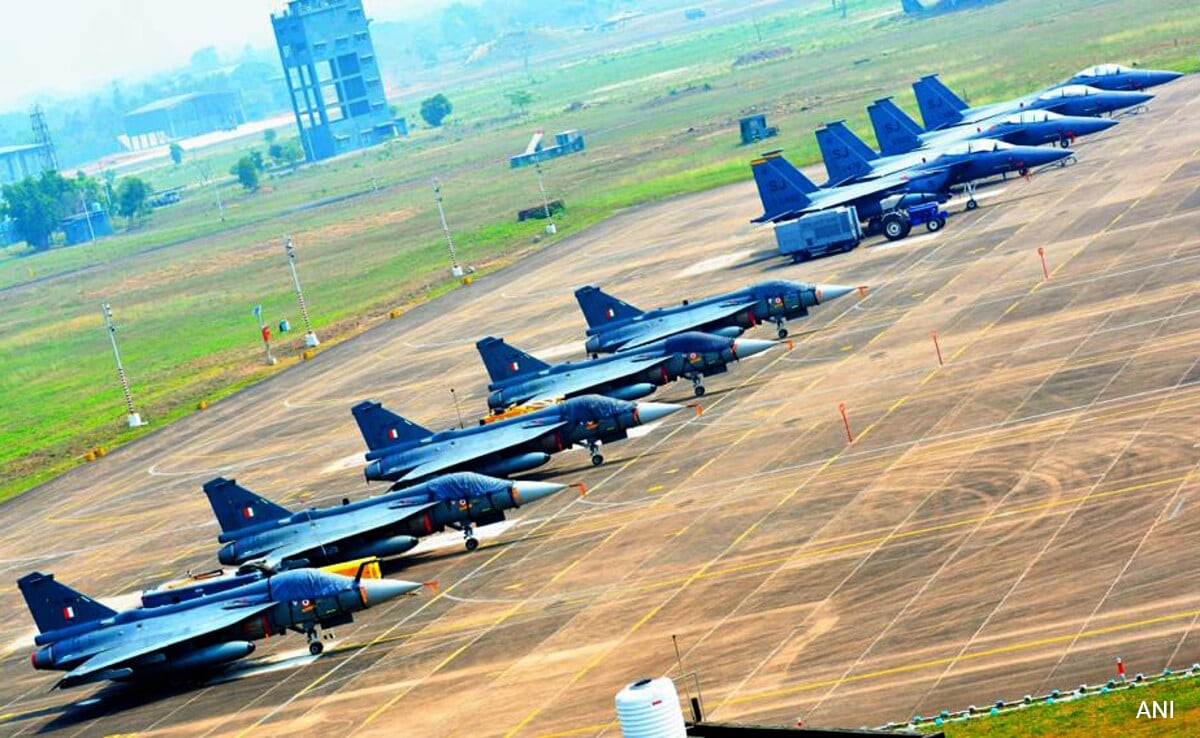2024-03-01 18:06:04

The units selected for the coveted awards have made stellar contributions to the air force’s history.
New Delhi:
In a historic first, four units of the Indian Air Force will receive the prestigious ‘President’s Standard and Colours’ from President Droupadi Murmu at the Hindon airbase on March 8.
President Murmu will be awarding the President’s Standard to 45 Squadron and 221 Squadron and the President’s Colours to 11 Base Repair Depot and 509 Signal Unit, the defence ministry said.
This will be the first time in the history of the IAF that four units will be awarded President’s Standard and Colours together, it said.
The award of the President’s Standard and Colours is the highest military honour for any armed forces unit. The four units selected for the coveted awards have made stellar contributions to IAF’s history.
The 221 squadron is known as the ‘Valiants’. The history of the squadron dates back to 14 Feb 1963 when it was raised at Barrackpore, equipped with Vampire aircraft.
Barely two years after its formation, the Squadron was pressed into action in the Eastern theatre during the 1965 Indo-Pak war, where it made commendable contributions to the overall war effort.
In August 1968, the squadron was one of the first to be re-equipped with the Su-7 supersonic attack fighter.
During the 1971 Indo-Pak War, operating in the Eastern theatre, the squadron undertook extensive counter air, close air support and photo reconnaissance missions.
The famed attack over the Kurmitola and Tezgaon airbases resulted in the destruction of several Pakistan Air Force (PAF) Sabres on the ground and proved to be pivotal in rendering the PAF ineffective in the Eastern theatre.
The 45 squadron is also called the ‘Flying Daggers’. Raised in 1959 with Vampire aircraft, the squadron took part in ‘Operation Vijay’ for the liberation of Goa from Portuguese rule in 1960.
On August 1, 1965, Pakistan launched an attack in the Chhamb sector with overwhelming superiority in troops and armour. The 45 squadron was the first IAF unit to launch offensive missions on the first day of the conflict.
Despite flying the vintage Vampires, the raw courage and professionalism of the pilots was enough to stall the enemy armour and the unit destroyed ten enemy tanks.
Subsequently, ‘Flying Daggers’ flew 178 sorties in support of the Indian Army. After the war, the unit was re-equipped with MiG-21 FL fighters.
In the 1971 Indo-Pak war, the unit was responsible for air defence in Punjab and Rajasthan sectors, flying 258 missions, which were instrumental in safeguarding the forward air bases against enemy air attacks.
In 1982, the unit was equipped with the MiG-21 Bis aircraft.
11 Base Repair Depot is a premier and only fighter aircraft base repair depot of the IAF that was established under Maintenance Command in April 1974 at Ojhar, Nashik.
Su-7 was the first aircraft to be overhauled by the Depot and, in the subsequent years, variants of MiG-21, MiG-23 and MiG-29 aircraft have been overhauled.
The 509 signal unit was established on March 1, 1965, and is presently functioning as an Air Defence Direction Centre in Meghalaya.
The unit has been functioning with the THD 1955 radar since 1995.
The watershed moments in the unit’s history date back to the Bangladesh Liberation War of 1971, wherein 509 SU emerged as the epicentre of all air defence activities over East Pakistan.
A defining moment came with the precision strike on the Governor’s House in Dhaka, orchestrated from the operations room of the unit.
(Except for the headline, this story has not been edited by NDTV staff and is published from a syndicated feed.)
IAF,Air Force,President's Standard and Colours
Source link
![]()
